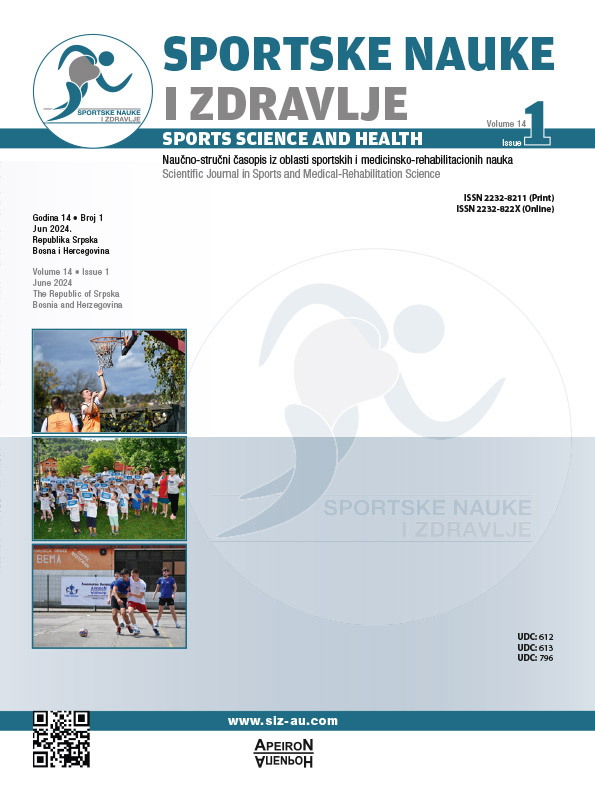Effect of Physical Activity on Changes in Mitochondrial Pool of Muscle Fibers
DOI:
https://doi.org/10.7251/SSH2401023PKeywords:
muscles, ultrastructural adaptive changes, mitochondria, physical activityAbstract
The purpose of this research was to study the restructuring of adaptive features of skeletal muscles (gastrocnemius and soleus) under conditions of prolonged physical activity on an ultramicroscopic level. Studies were carried out on laboratory animals (rats) of two groups - the control (intact) and the experimental group (exposed to a 30-minute swim test for 5 weeks). The muscle material was studied using electron microscopy. We found that during the process of adaptive restructuring of skeletal muscles, morphological transformations occur at different levels of structural organisation. Changes in muscle tissue during prolonged physical load include increasing deposits of myoglobin with additional focal changes in glycogen content and an increase in mitochondria. A significant increase in the volumetric density of mitochondria was noted in the symplasts of the gastrocnemius and soleus muscles of rats in the experimental group. Additionally, the average cut size of mitochondria increased compared to intact animals. This was due to the appearance of large organelles against the background of a decrease (almost three times) in the number of small mitochondria. The consequence of such transformation can be metabolic reorganisation in myocytes, and changes in the plastic properties of energy generators and contractile structures. The established processes can become a basis for understanding the adaptive restructuring of skeletal muscles of athletes under the influence of long-term physical activity.
